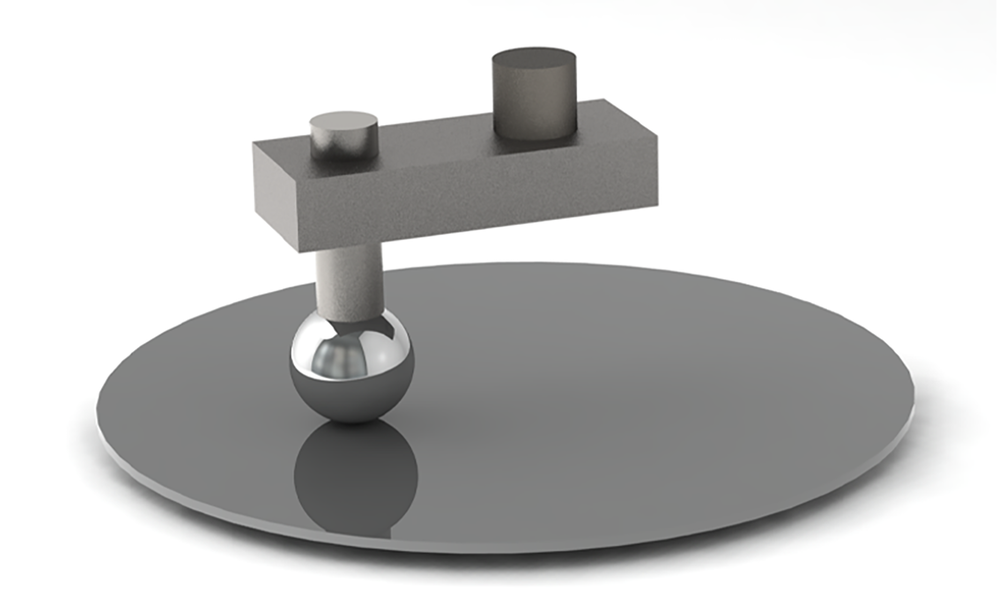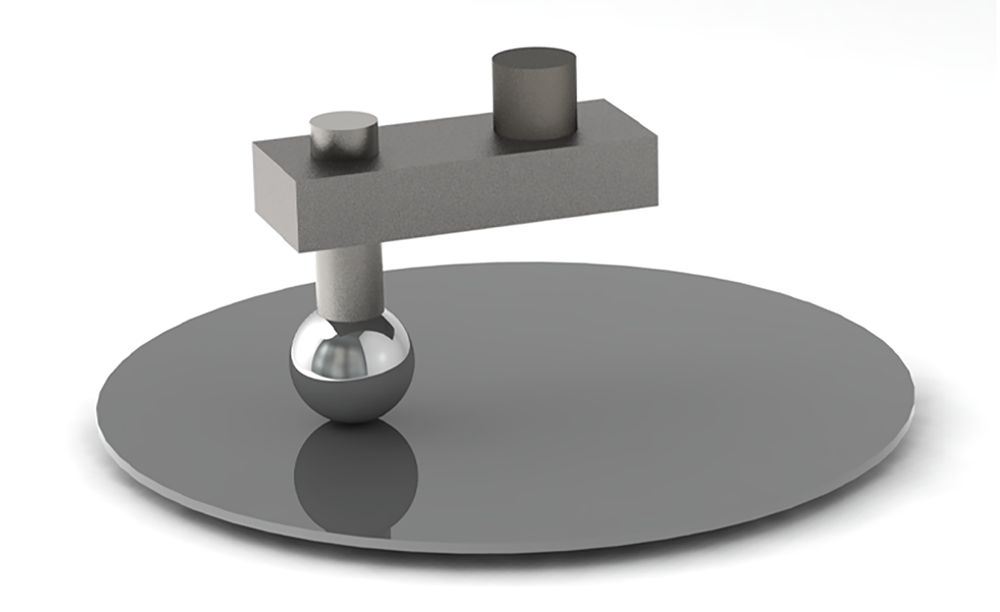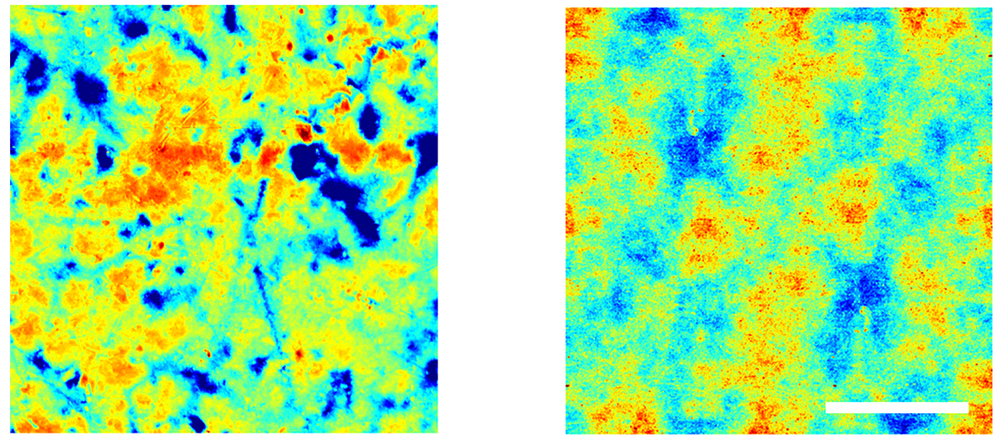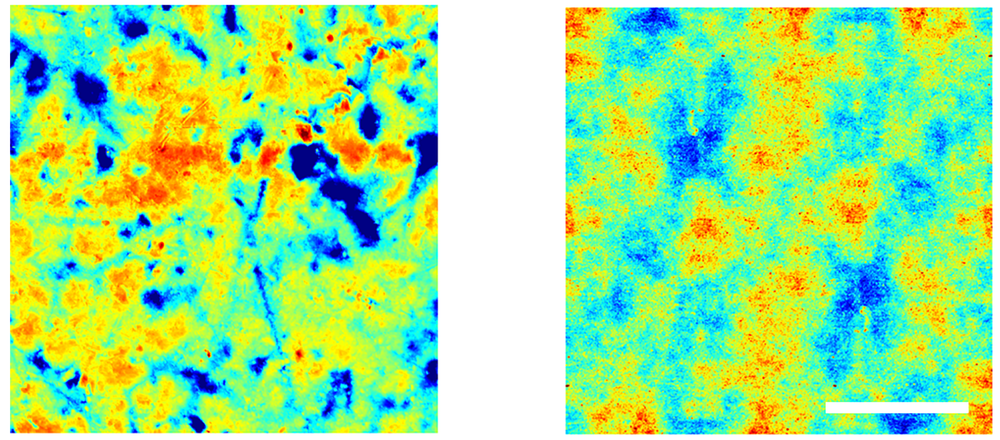Why Wetting a Surface Can Increase Friction
A wet floor poses a risk for slipping, but in certain cases, water added to a surface can increase friction. Researchers have now found that this phenomenon is partly explained by hydrogen bonds between the water and the surface, an effect that was not previously thought to play an important role [1]. The team reached this conclusion by studying the friction between two silicon surfaces under a range of wetness conditions. The researchers showed that heavy water produces greater friction than normal water—evidence that hydrogen bonding has an influence. The results could lead to a deeper understanding of the effects of humidity on friction.
The earliest friction studies looked at relatively large objects, such as a wood block sliding down an inclined surface. More recent efforts have focused on the nanoscale, exploring the friction forces on needle-like probes. These latter experiments have identified the friction mechanisms that operate at a single microscopic bump, or “asperity,” on a surface. But a missing piece is how to relate the friction at nanoscales to that at macroscales, says Liang Peng from the University of Amsterdam.
Peng and his colleagues have bridged this gap by studying the friction of a relatively large probe: a 3-mm-wide silicon sphere. They pressed the sphere down on a flat silicon wafer with a “normal force” of 50 millinewtons, which resulted in a 20-micrometer-wide contact area consisting of multiple asperities. They then measured the horizontal force needed to move the sphere across the wafer at 100 nanometers per second. The relative humidity was varied from 0.6%, where the surfaces remained dry, to 80%, where water was present but not completely coating the surfaces. They also tested the surfaces when fully immersed in water. Previous experiments have looked at the humidity dependence of friction, but they have focused on either macroscopic or microscopic scales.
According to the data, the coefficient of friction (horizontal force divided by normal force) had its minimum value of 0.3 when the surfaces were completely dry. As the humidity increased, the coefficient peaked at 0.6 when the humidity was 20% and then slowly decreased as the air became more humid. For the fully immersed case, the coefficient was around 0.5, implying that the completely wet surfaces were nearly twice as sticky as the completely dry ones.
As a first attempt to understand this behavior, the researchers considered capillary adhesion, a phenomenon well known from single-asperity studies [2]. In a humid environment, water vapor can condense on the asperity to form a “water bridge” that connects to another asperity on a nearby surface. The bridge resists any motion (such as sliding) that pulls the asperities apart. For the team’s multiasperity system, they showed that a multibridge model reproduced the friction peak at around 20% humidity, but it could not explain why the fully immersed surfaces had more friction than the dry ones. There are no bridges in either extreme case, so one might expect them to have the same friction.
The researchers propose that hydrogen bonding could explain the mystery. Hydrogen bonding refers to the weak electrostatic attraction that can form between the water molecules and the silicon surfaces. To test this explanation, the team repeated the experiments with heavy water, in which the isotope deuterium replaces the hydrogen atoms. Heavy water has stronger hydrogen bonding, and as the researchers predicted, the heavy water produced a higher coefficient of friction (0.58) than normal water (0.51) in the fully immersed trials.
Our experience of wet floors as slippery is not wrong, Peng says. Our shoes and the floor are relatively rough, so the asperities are large, and they tend to lock together, causing a resistance to sliding. “If you put in some water, those asperities can separate, and the resistance becomes less,” Peng says. The experimental surfaces, by contrast, were relatively smooth, so the microscale forces of water were important.
“This paper adds some new and interesting twists to the very complex and fascinating behavior of water,” says Robert Carpick, a mechanical engineering professor at the University of Pennsylvania. He compares the experiments with licking one’s fingers to help turn the page of a book. “The researchers show, interestingly, that hydrogen bonding is involved in this, not just capillary bridges as conventionally thought,” Carpick says.
Matthijn de Rooij from the University of Twente in the Netherlands says that humidity effects are relevant to a range of friction situations, from granular contacts in geological faults to precision mechanical devices. “The results in this paper illustrate and explain these effects on the lab scale, but it can be expected that very similar phenomena will play a role in the realm of larger contacts as well,” he says.
–Michael Schirber
Michael Schirber is a Corresponding Editor for Physics Magazine based in Lyon, France.
References
- L. Peng et al., “Nonmonotonic friction due to water capillary adhesion and hydrogen bonding at multiasperity interfaces,” Phys. Rev. Lett. 129, 256101 (2022).
- D. B. Asay and S. H. Kim, “Effects of adsorbed water layer structure on adhesion force of silicon oxide nanoasperity contact in humid ambient,” J. Chem. Phys. 124, 174712 (2006).







